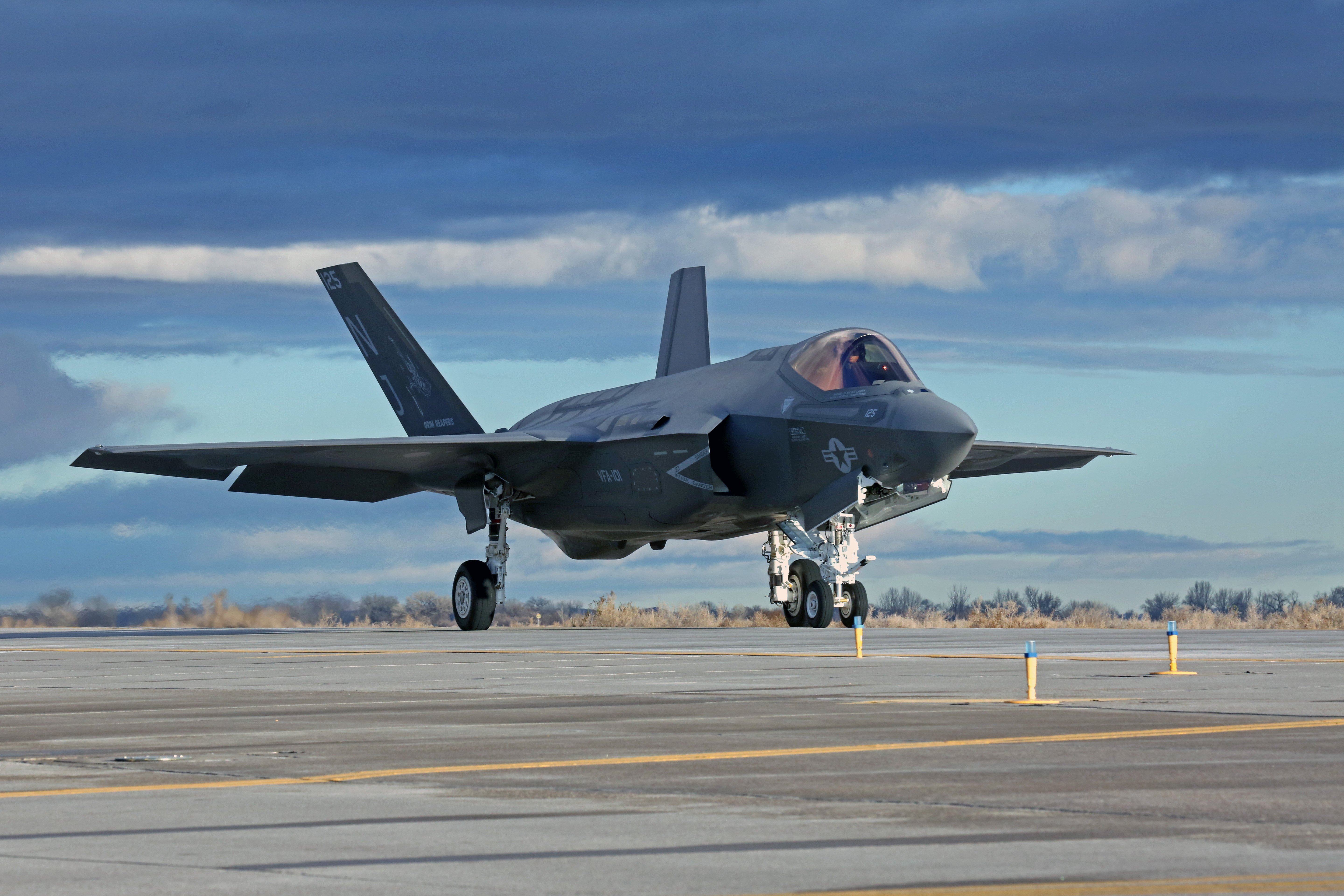
The first F-35C Lightning II Joint Strike Fighters will arrive on the West Coast next week as the Navy prepares to ramp up its training pipeline for the next-generation stealth jet designed for carrier operations, Navy officials announced Tuesday.
Four of the single-seat, multi-mission Joint Strike Fighters are scheduled to land at Lemoore Naval Air Station, Calif., on Jan. 25 and join Strike Fighter Squadron 125, a former F/A-18 Hornet training squadron the Navy reactivated on Jan. 12, Naval Air Force officials said in a news release.
The “Rough Raiders” of VFA-125, will become the Navy’s latest squadron to get the advanced fighter designed for its carrier-based force. The squadron will serve as the west coast-based Fleet Replacement Squadron.
The Navy’s first F-35C FRS squadron, the “Grim Reapers” of VFA-101 based at Eglin Air Force Base, Fla., received its first jets in September 2013 and began training the first groups of pilots and maintainers.
Lemoore NAS, located in California’s central valley, is the Navy’s designated hub for its strike fighter community supporting the U.S. Pacific Fleet. The Navy sees the Lockheed Martin F-35C as providing key, critical capabilities to its carrier air wings, which also will include Boeing F/A-18E/F Super Hornet fighter jets, Boeing EA-18G Growlers electronic attack aircraft, Northrop Grumman E-2D Hawkeye multi-mission surveillance and refueling aircraft and Sikorsky MH-60R/S Seahawk helicopters, along with Carrier Onboard Delivery logistics aircraft.
The joint JSF program and Lockheed Martin-built jets have come under heavy criticism, most recently from President-elect Donald Trump, over escalating costs for the jet and continuing program delays, even as the services continue with the jet’s development, live-fire weapons fire testing and upgrade packages including advanced software. The Pentagon’s Director of Operational Test and Evaluation also levied some pointed criticism and skepticism at the F-35 program in its FY 2016 annual report issued in December.
But program officials remain on the defensive but confident.
“These accomplishments prove the basic design of the F-35 is sound and test results reinforce our confidence in the ultimate performance the U.S. and its partners and allies value greatly,” Air Force Lt. Gen. Chris Bogdan, the F-35 Program Executive officer, said about the F-35 in a Jan. 17 statement remarking on the DOT&E report. “As a reminder, the F-35 program is still in its developmental phase. This is the time when issues are expected to be discovered and solutions are implemented to maximize the F-35’s capability for the warfighter. While the development program is more than 90 percent complete, we recognize there are known deficiencies that must be corrected and there remains the potential for future findings.”





